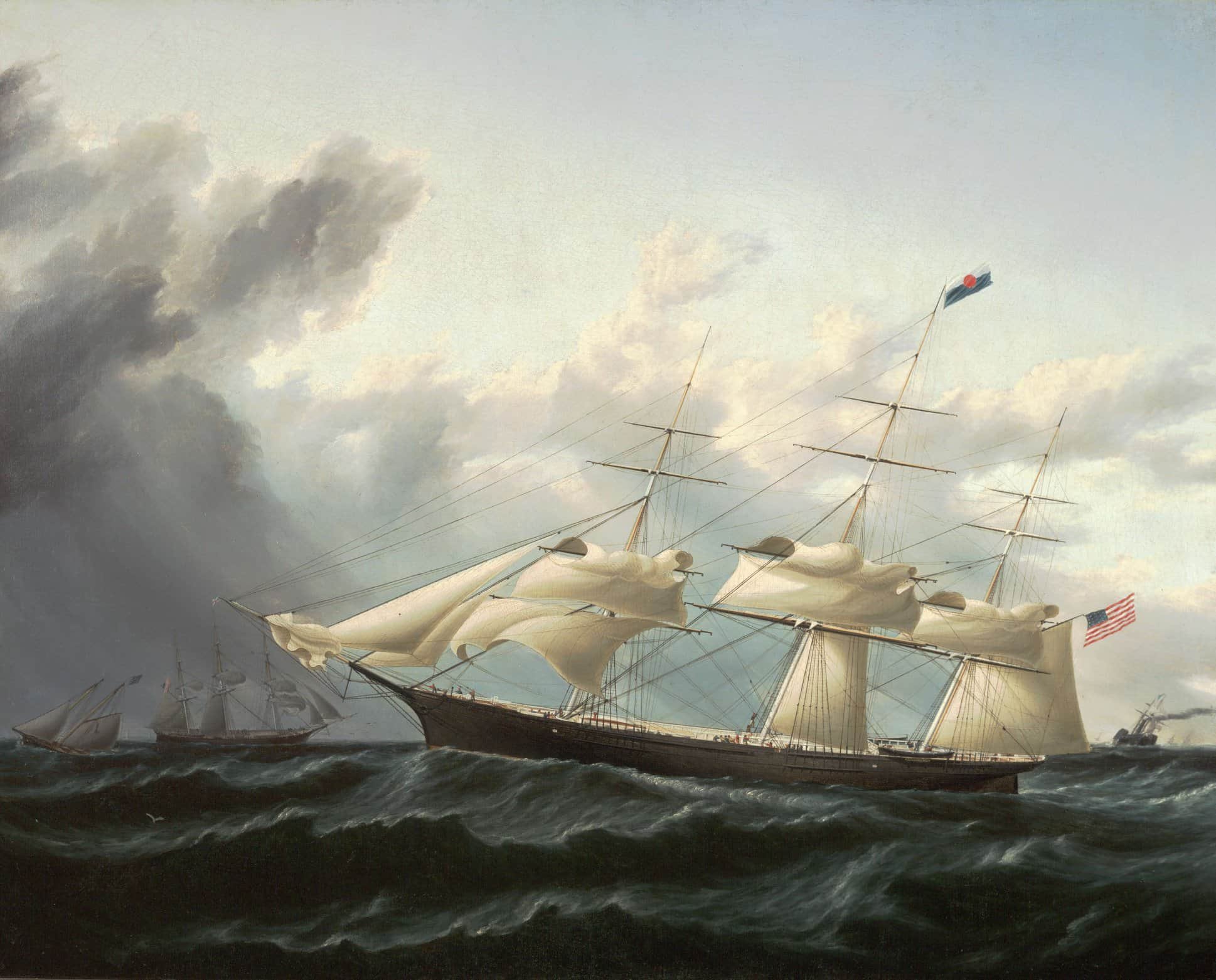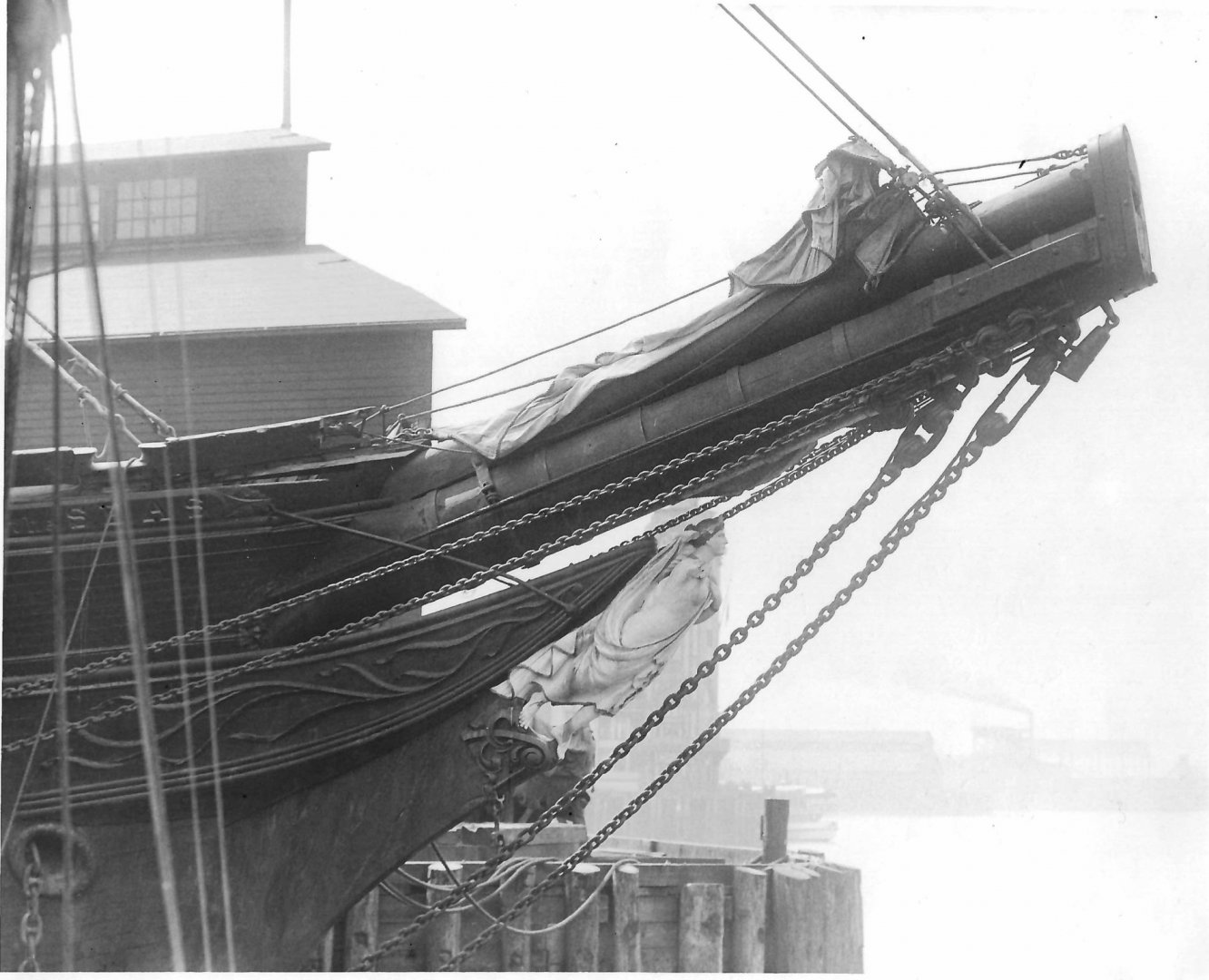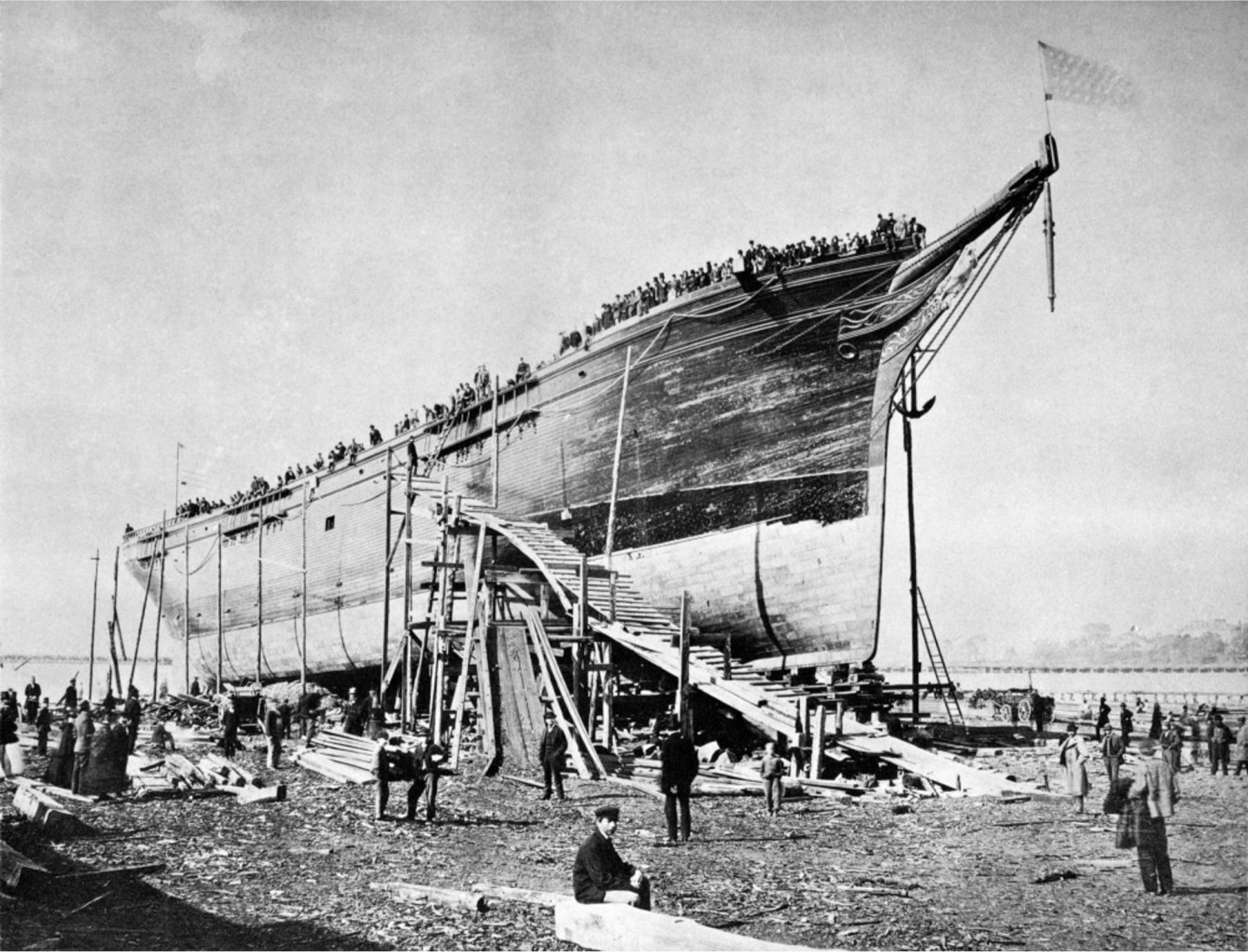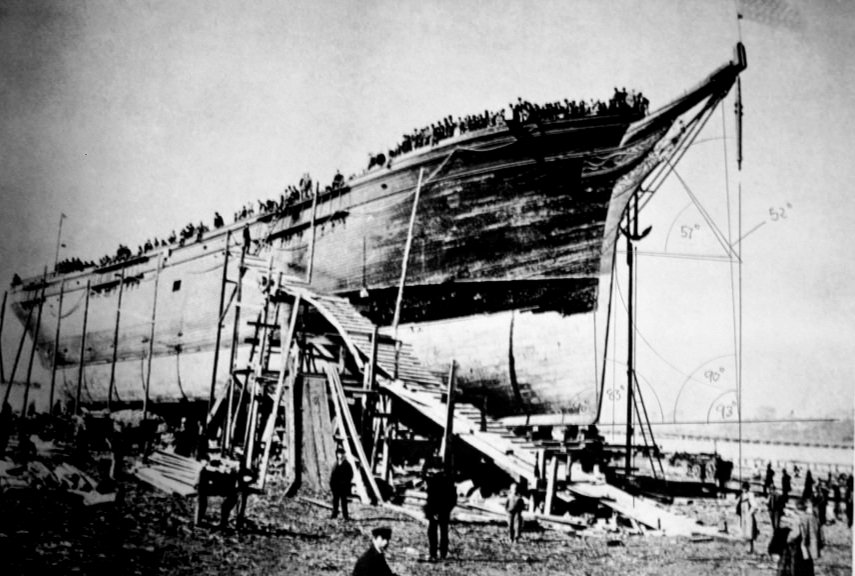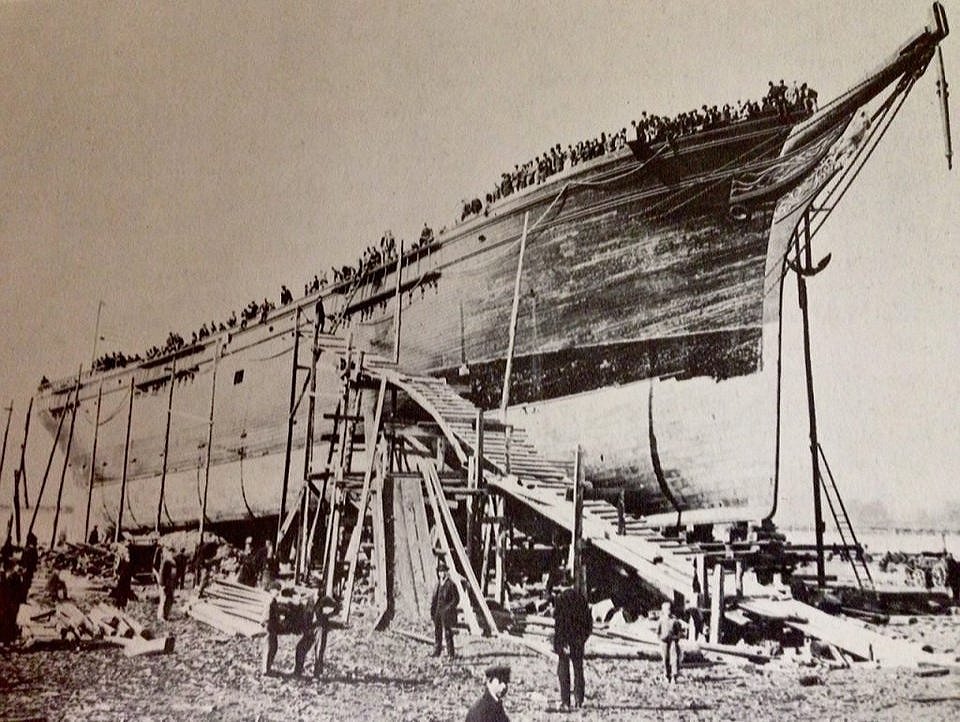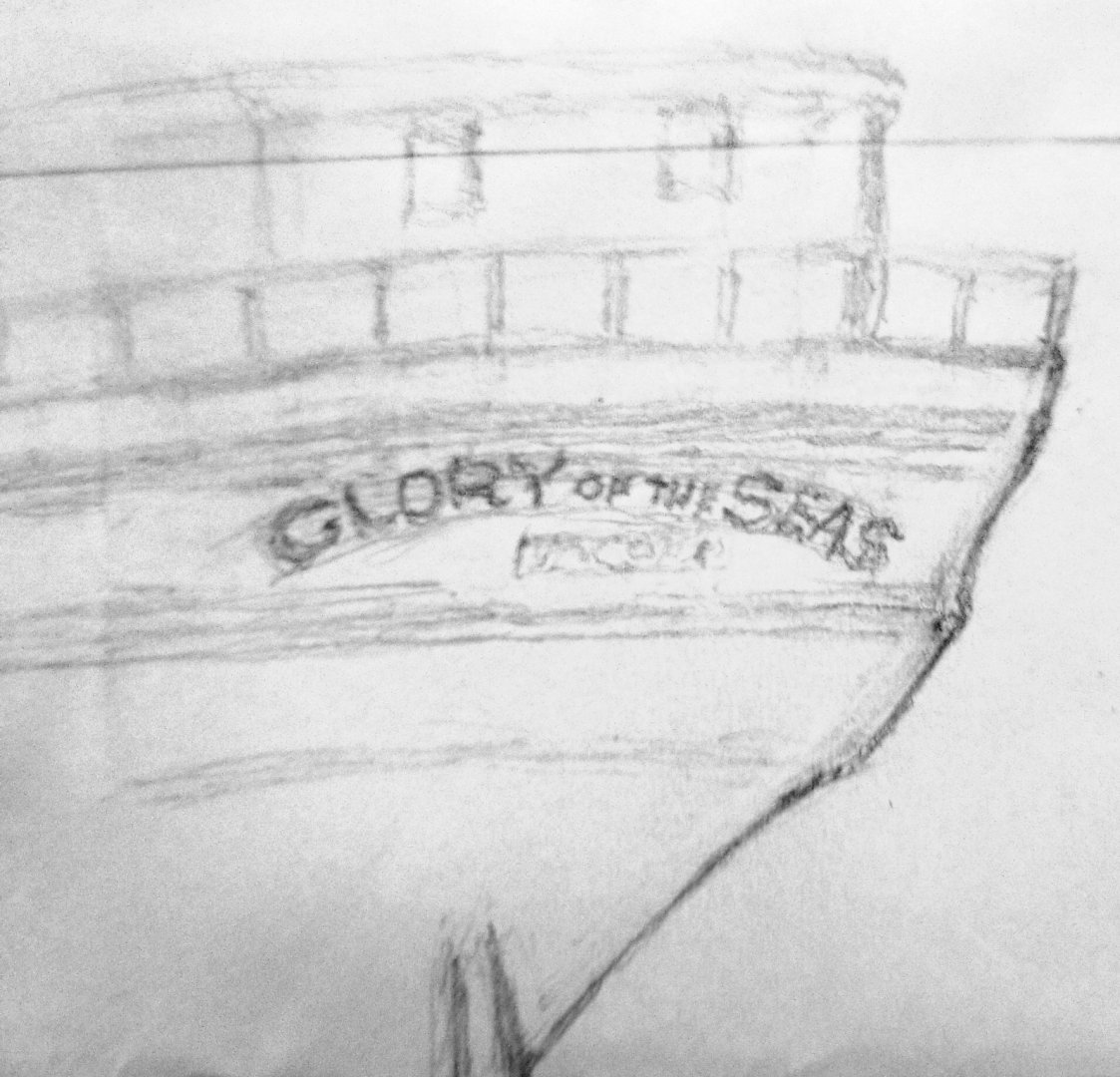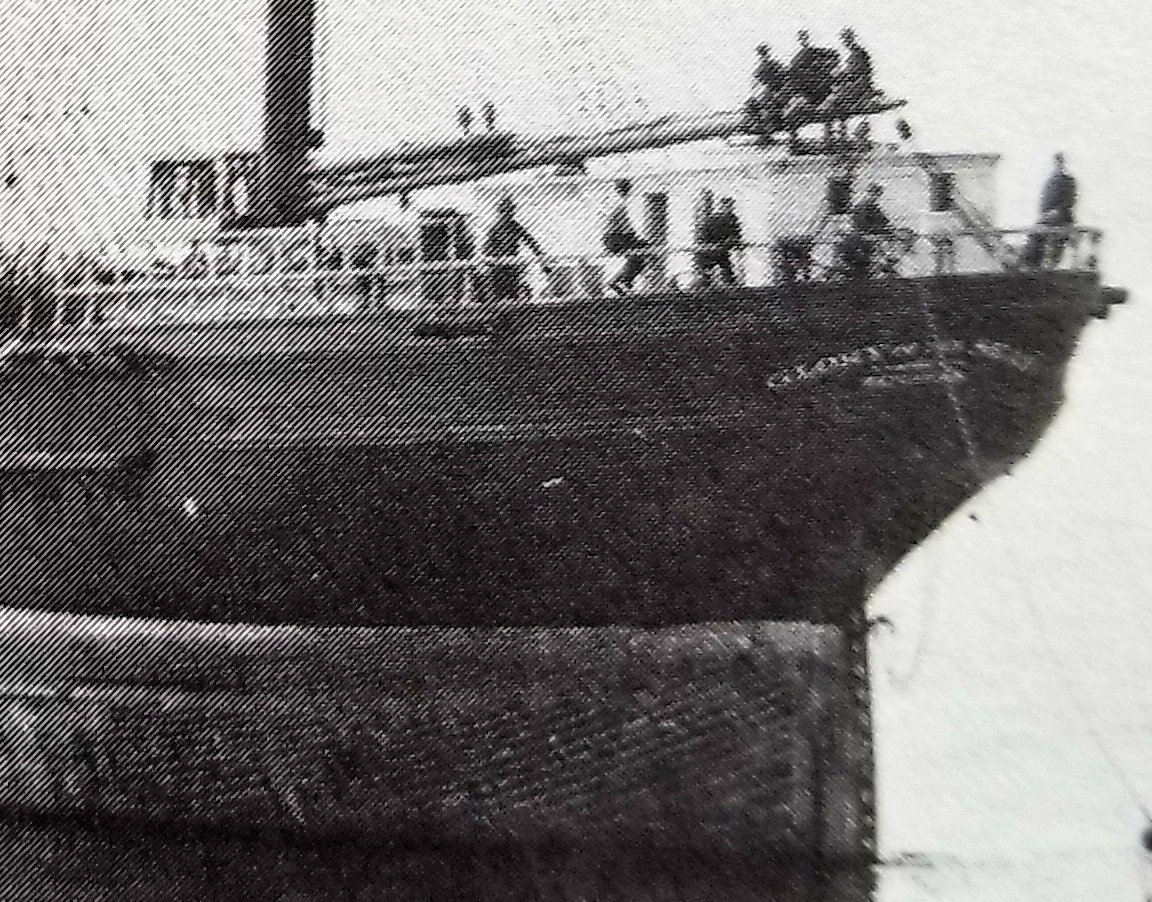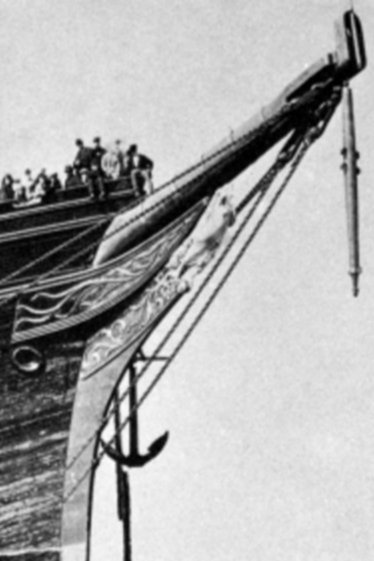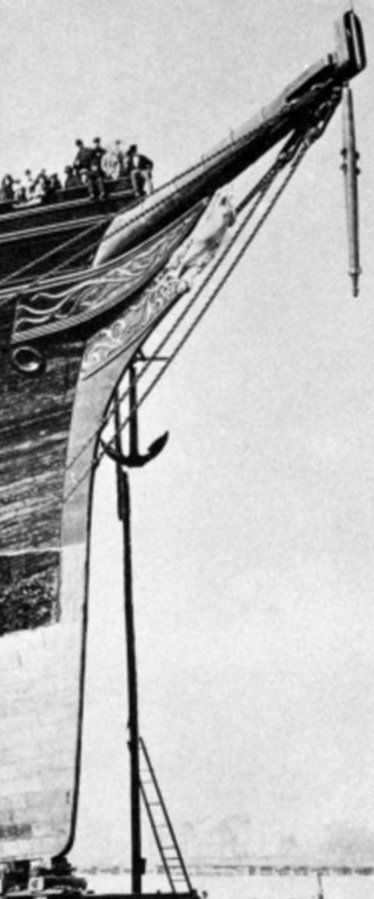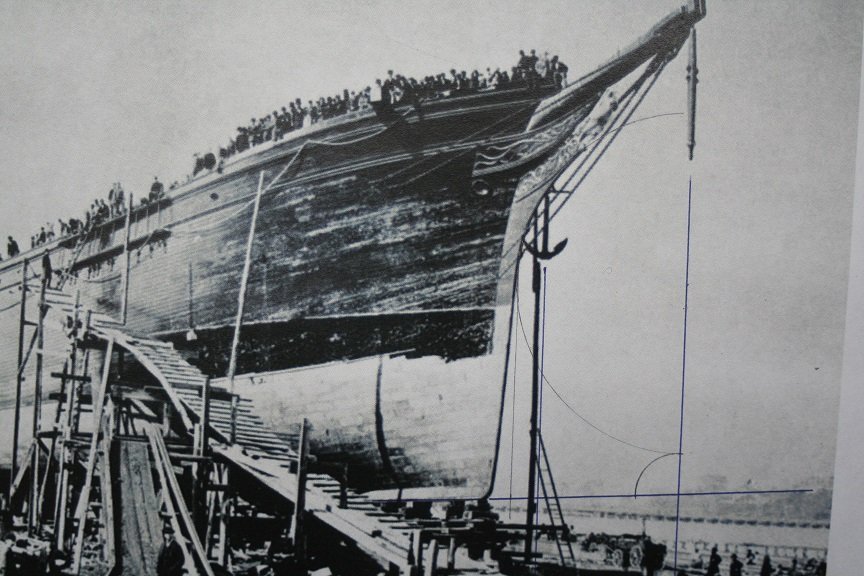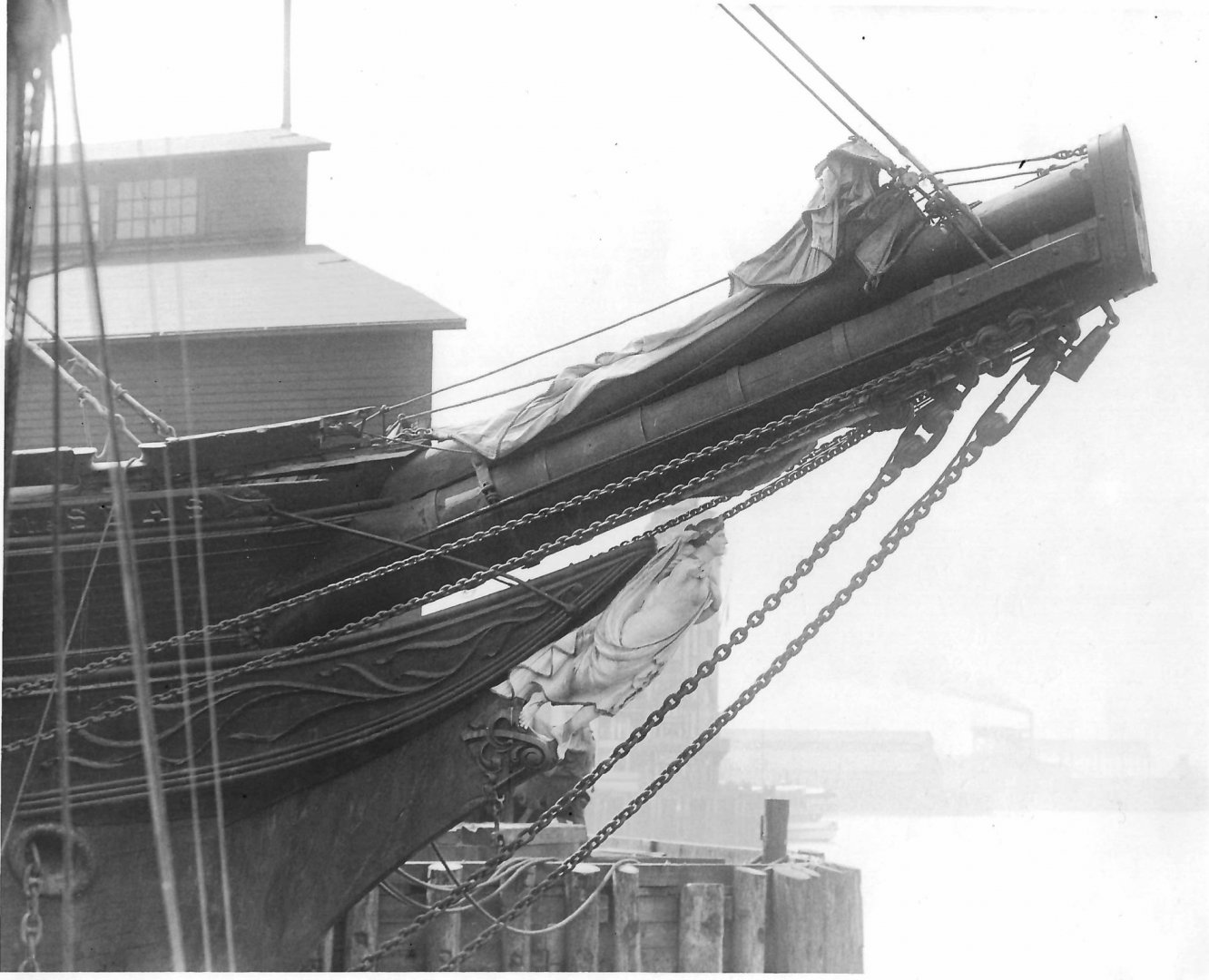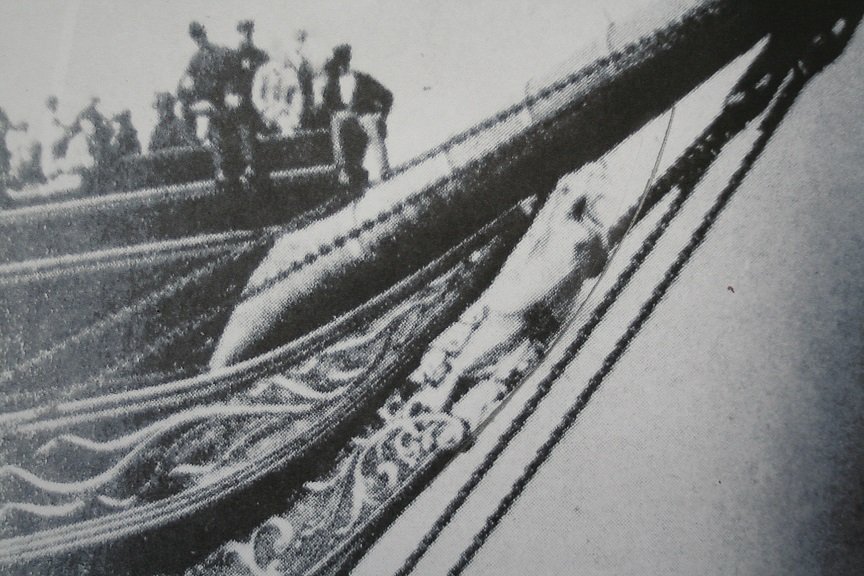-
Posts
2,152 -
Joined
-
Last visited
Content Type
Profiles
Forums
Gallery
Events
Everything posted by ClipperFan
-
Druxey, Nice work on Athene. One correction you want to make. If you look carefully you can see the central iron armature of her right arm where it broke off. It's pointed down more than your recreation does. Than you actually captured her right hand which is the oblong artifact up next to her small bun. Reposition her right forearm to connect to her hand and erase the back line at the right end of her hand. Very nice overall, you definitely captured her graceful pose and lovely features, which isn't easy to do.
- 3,560 replies
-
- clipper
- hull model
-
(and 2 more)
Tagged with:
-
Vladimir, Regarding your attempts to recreate Glory's Cutwater flower carvings, there's a continual double stem that leads in a curving line all the way to the end. There's no break. It's the thinnest section but it's definitely there. The problem is that it's damnably difficult to see. Also it looks like the lower carved arch drops down along the outer edge and towards the end follows the curve of the lower Naval Hood arch.
- 3,560 replies
-
- clipper
- hull model
-
(and 2 more)
Tagged with:
-
Vladimir, Excellent work! That's exactly what I see too.
- 3,560 replies
-
- clipper
- hull model
-
(and 2 more)
Tagged with:
-
My apologies then. It must have been the way reproductions were made. I forgot that some were taken from books that were quite difficult to get flat in order to reproduce them.
- 3,560 replies
-
- clipper
- hull model
-
(and 2 more)
Tagged with:
-
Vladimir, Beautiful work on these lovely ribbon scrolls. Some observations on the ornamental moldings of the Naval Hood . While the two lower moldings of the Main Rail continue on to complete the upper moldings of the Naval Hood, there are three thinner moldings that comprise the edge of the lower Hood arch. All three terminate at the tip, while the top two actually continue to the opposite side. The lower moldings aren't even at the Bow where they meet the Hull, they actually stagger inwards, as they edge the joint which is at an angle to match the curve of the prow. There's a hawse line running from the notch in the Cap Rail outward, running over the engraved "E" in "Seas" perfectly outlines this junction.
- 3,560 replies
-
- clipper
- hull model
-
(and 2 more)
Tagged with:
-
Rob, Vladimir. Druxey, et all It looks like there were more than one image taken of "Glory of the Seas" on the Ways in 1869. I noticed that the position of the flagstaff with starry flag at her Bowsprit changes angles in various pictures, as does the angle of inclination of her Bowsprit Cap and Bowsprit too. The most noticeable difference is between the 1st and 2nd scene. It's hard to tell, since the middle pic has the Flag partially cut off but the flagstaff is verticle in this scene, while it's angled slightly backwards in the top one. Meanwhile in the third, bottom scene, the dolphin striker, which we referred to as being a reliable source as a plumb line actually angles outward slightly. I just thought others would appreciate these subtle differences.
- 3,560 replies
-
- clipper
- hull model
-
(and 2 more)
Tagged with:
-
Vladimir, I get it with the driving yourself nuts comment. Imagine doing this in your spare time since 2009.... You sort of end up wondering if you're becoming obsessive-compulsive! Back to our project, which really feels like we're getting so close. We're constantly trying to evaluate 3D and calculate 2D dimensions from them. I think everyone is becoming very familiar with how an observation point has a substantial impact on how an object appears from different perspectives. When I attempted to calculate the Stern's height from the close up of Glory's 1869 fitting out photo, I forgot to account for the fact that this was taken from below the Ship's horizon. That likely means the Stern would be a little higher. It's like if you saw a man from atop a small hill, he would look a little smaller than if you saw him on level ground. Meanwhile looking at the Stern from the Alaskan towing scene, there's a definite sheer heading towards the Bow, which looks like it's more than a mere foot and a half. As for determining sheer itself, where Glory is still fairly new, look at her 1877 San Francisco dock image. Again her Stern looks like it's higher than a foot or so above the level of the Main Shrouds. So the work continues....
- 3,560 replies
-
- clipper
- hull model
-
(and 2 more)
Tagged with:
-
Rob & Vladimir, The lowered Stern now looks a little too low now. I agree with Vladimir that it's not as elegant as before. Maybe the lower view of Glory's stern foreshortened her Stern height a little. Rob can you double check my calculations? I estimated about a 4' difference between her Stern and Bow from looking at the 1877 SF dock photo. That would put her Stern at 21' instead of 19 1/2'. It would also make the difference between her lowest point of 18' and even 3' difference instead of 1 1/2'. I hate to drive Vladimir nuts but this might look better.
- 3,560 replies
-
- clipper
- hull model
-
(and 2 more)
Tagged with:
-
Vladimir, In our continuing search to realize "Glory of the Seas" as she was initially built, we're all collaborating as best we can to accomplish our mutual goal. Rob can either verify or revise my rough estimate on the Stern's height. From my measurement, she appears to be 19 1/2' at her Taffrail. We're fairly certain she's also 25' at her Bow. Using the published 7' sheer from Duncan MacLean, that puts her lowest area, midway of her Main Shrouds at 18'. Counting strakes at her Starboard Docking Port, I got 10 from waterline to base, 4 on the side and 7 to lower Main Rail Molding, with each strake being 6 1/2" it comes to 12' adding 6 1/2' Bulwark brings that dimension to 18 1/2'. We haven't nailed down the exact location but my estimate is somewhat midway between Main Mast and Foremast Shrouds being closer to the Shrouds. Using these dimensions, run a parabolic curve hitting these points. From her impressive 1877 San Francisco docking view, it looks like the most dramatic rise occurs at her Quarter Deck Cap Rail forward. Depth below waterline is a consistent 22'. Her prow is a graceful curve from her Cutwater through her lower Bobstay then it's a almost a straight line at a negative 8 1/2 degrees from verticle, with what appears to be a 1/4 circle at the Stem bottom where it joins the Keel.
- 3,560 replies
-
- clipper
- hull model
-
(and 2 more)
Tagged with:
-
Vladimir, Remember I've been saying McKay's Sterns all had low overhang? Take a direct line up from the shadow of the rudder joint below. Now look at how little of Glory's Stern projects beyond her rudder. This view actually highlights that fact more than some others do. What's challenging with this image is the fact that sunlight washes out specific details we're able to see in other views. In this image it does appear like her Monkey Rail is verticle but if you look very closely it does project slightly outward. The lovely gold carvings are so shimmery it conceals the character of her Main Rail, so it's hard to tell that it's not rounded. Good catch with the yellow line, although I think it would be a parallel line following around her Stern. This view also shows that Glory's Stern Post is a direct line right up to her Stern planks, there's no significant cut out like your plan indicates. There does appear to be a small pintle device at the very top of the rudder, which is to be expected. Finally, if our premise that Glory's bulwarks are 6 1/2' tall is accurate, it would mean that her Stern is about 19 1/2' above her waterline, putting her Stern 5 1/2' lower than her Bow and just about 1 1/2 higher than the lowest level of her sheer of 18' at the midline of her Main Shrouds. Of course until we can definitely prove her Bulwarks are 6 1/2' this is still somewhat speculation.
- 3,560 replies
-
- clipper
- hull model
-
(and 2 more)
Tagged with:
-
Vladimir, as the old phrase goes "the Devil's in the details".... beautiful workmanship on your Cutty Sark model. I especially appreciate the gold embellishments.
- 3,560 replies
-
- clipper
- hull model
-
(and 2 more)
Tagged with:
-
Vladimir, you get the picture! Thanks for the compliment too. What's fascinating is looking at your revised Stern when it's smaller, it looks very similar to your older all round one. I believe when you incorporate these latest subtle changes, it will result in even more dramatic impact.
- 3,560 replies
-
- clipper
- hull model
-
(and 2 more)
Tagged with:
-
Rob and Vladimir, This is the subtlety that my artist's eye sees. From top down the Wheelhouse and Stern House both aren't purely verticle, there's an ever so slight cant inward, which I suspect is true of all structures. The turned rail on the Stern House definitely cants inward slightly. The picture of the Cabin Boy standing on the roof clearly shows it. The Stern Rail that surrounds it on turned stanchions is verticle on her sides but cants just slightly outwards around her curved Stern, as does her Monkey Rail below. The Main Rail is straight but due to the double moldings and thin shelf which surrounds the entire Ship, appears to be indented, as illustrated here. Then there's a small section just below which only appears to be on the round portion of Glory's Stern which is almost straight but does seem to have a slight bow outwards, after that there's a drop to the Rudder Post which isn't straight but bows inwards slightly. It's all very subdued but it's definitely visible.
- 3,560 replies
-
- clipper
- hull model
-
(and 2 more)
Tagged with:
-
Vladimir, this is definitely much closer. Starting from the Stern Rail, notice how the turned stanchions tilt slightly outwards. They're also much thinner. They appear to be smaller versions of the full scale ones on her large Stern House. The Monkey Rail looks perfect now as does the Main Rail below. If you look closely, you'll see that besides the two moldings that wrap around the entire ship, there are also two small, thin flat shelves that do the same thing. One can be seen just above and the other mirrors it just below the double moldings. These features are what appears to make the Main Rail look like it's almost indented. The small bulge in your illustration is more subtle on Glory and blends into the curving section below. Upon closer observation of her Stern in the towing scene what appeared at first to be a curve outwards now looks more like it's actually a slight gradual arched curve inwards where it meets the rudder. Lay a ruler on the image you'll see what I mean. What you have now is much closer to the photos now.
- 3,560 replies
-
- clipper
- hull model
-
(and 2 more)
Tagged with:
-
Vladimir, Isn't it fascinating how our perceptions can get biased by misleading or misinterpreted evidence? Good luck with your revisions. I'm looking forward to seeing them.
- 3,560 replies
-
- clipper
- hull model
-
(and 2 more)
Tagged with:
-
Vladimir, Perhaps these two close ups will help you with the Stern. It took me a while to understand that while it looks curved, two out three sections are not. They're really straight. If you look closely at the Monkey Rail above the Main Rail, it's a straight component which angles out just slightly. Look below it and you'll see that the Main Rail too is straight, not curved as you would suspect. In reality the only curved section is from below the Main Rail molding and this section is not purely a concave one it starts out convex and then becomes concave. I know this is more challenging but it's accurate.
- 3,560 replies
-
- clipper
- hull model
-
(and 2 more)
Tagged with:
-
Vladimir, Some observations of Glory's condition in the sharp close up might help us in our efforts to recreate her original appearance. There's a sharp break in the wood just in front of her name board on the right side. The front of her previously neat cap rail, just above her Monkey Rail is missing entirely. When you consider how ruggedly this vessel was constructed, it must have been a serious wave to do such impressive damage to her Starboard Quarter Deck Bulwarks. They appear to be pushed out and slightly down. Compare this to her original launch photos. You have traced the Bowsprit accurately from the photo. However, since she's had her 31' Jibboom cut off outside the Cap, it makes sense that the missing heft of that spar has allowed the Bowsprit to lift up. A more accurate angle would be to extend a line from the top of her Naval Hood. When she was fully rigged, it's certain that those massive dual chain bobstays beneath and two iron bars tied into tips of her Naval Hoods would be cinched down tight to strengthen all her Masts against powerful effects of wind and waves. If my previous measurement is correct, it should be 20.60 degrees, exactly the measurement of 4 1/2" rise to 1' run. The Naval Hood is practically perfect now, great work on that. Where it originates from her Hull would match the sharp entrance of her Bow. In the photo, there's a hawse line coming from a notch in the Cap Rail which neatly follows the three bottom moldings of the Naval Hood. If you trace that line, it appears to be a perfect match for the beginning of the Naval Hood. It's very difficult to see because it's neatly matched to the Hull. The Carved Arch on her Cutwater is also much improved. Look real close at the left heel of Athene, you'll see what looks like a small pedestal for her to step on, just above the billet head of the arch itself. Another refinement is the drop of the arch line itself. Again, peer closely at her launch scene, the arch line appears to mirror the Naval Hood above and ends slightly below her anchor hawes hole. As for a still verticle appearance of her prow, my personal suspicion is that we're still coming to grips with dual challenges. Her later condition due to significant keel hogging looks like it flattened her sheer while exaggerating her Prow. It's most likely from her entrance becoming more verticle not less. Meanwhile, the 1869 scene of Glory on the Ways is on a slight rise as she towers high above us, which coincidentally exaggerates verticle appearance of her Bow entrance. Rob has measured her Prow as having a negative 8 1/2 degree inclination from 90 degrees using her Anchor and Dolphin Striker as Plumb lines, offsetting her angle of inclination on the Ways. Meanwhile, it looks to me that Glory has a slight, almost unnoticeable forward curve below the waterline. I really need to hold a clear ruler over this section on a good sized enlargement to confirm my suspicions. What's clearly obvious though is a graceful curving entrance at the base of her Stem which joins the keel. Observing your overall profile, the base of her 7' sheer drop should be at the center of Glory's Main Shrouds, which are just about even with the back of her lower Main Mast. Her Stern looks like it should probably be about a foot lower and still slightly smaller, possibly less pronounced overhang. I refer to her beached at Endolyne which gives a decent view of her Stern silhouette. To confirm this Hull configuration will require a perspective reconstruction of her 1877 San Francisco dock scene. A verticle plumb line could be dropped from the end of her Mizzen Spencer Spar. Then the center line of her prow could be connected to that spar, running through centers of all three masts to identify the perspective center of the vessel. perspective horizontal lines could be extended to the end of her Stern. Effectively, this should give a sense of the difference in height of the Stern to the lowest point of Glory's sheer at the midway point of her Main Shrouds as well as the much higher Fore Quarter Deck. All of this is such a challenge because we're trying to ascertain a two dimensional profile using three dimensional images in multiple photos.
- 3,560 replies
-
- clipper
- hull model
-
(and 2 more)
Tagged with:
-
Rob, using my cellphone, I measured Glory's figurehead at 18mm, above the waterline measured 6.1cm and below was 5.3cm. That translates to 25' above and 22' below. It will be interesting so see if your results come out similar.
- 3,560 replies
-
- clipper
- hull model
-
(and 2 more)
Tagged with:
-
Sailor, I had the same idea but using an old fashioned ruler and plotting out her keel length as specified in the diagram. The sketch is very rough, probably just enough to give an impression of old Glory's under Hull condition. There are locations where a 16' deviation is specified more than once but the sketch has one lower than the other. Once an accurate 'connect the dots' drawing was done, at least the original keel length should be reached. It's just like straightening out a rope. As for her Cutwater, my suspicion is that it became more verticle with keel deviation, not less. Have you ever sat in a raft and watched what happens to the ends?
- 3,560 replies
-
- clipper
- hull model
-
(and 2 more)
Tagged with:
-
Rob, as we're all committed to acquiring the utmost accuracy and this is an ever evolving project towards achieving that goal, I see no reason to apologize for revising your calculations based upon more precise resources. If I'm correct, our new dimension for Glory's Naval Hoods is 17 1/2'. Does that sound correct? Meanwhile, if it's not too much to ask, can you calculate Glory's coppering up to the waterline from her 1869 on the Ways scene? There are now two conflicting statements. Something Mike pointed out to me happened a lot. According to American Lloyd's, large ships like Glory had 24' waterlines. Mike added a 14" strake to her previous 22' waterline and revised it to 25'. An accurate number would help a lot.
- 3,560 replies
-
- clipper
- hull model
-
(and 2 more)
Tagged with:
-
Another item to be refined is Glory's Stern. If you look at her magnificent 1877 dockside photo, it's readily apparent that her Stern, while slightly higher than her lowest point, midway of the Main Shrouds, is much lower than her Bow. I now believe that the dramatic rise of her Bow seen in later years such as my favorite 1907 San Pedro Broadside is partially due to severe hogging keel beneath which has flattened her previously lovely 7' sheer. Incidentally that drop would be counted from her highest point at the Bow to the lowest, mid center of her Main Shrouds, not from her Stern. From dead reckoning, I estimate the difference in height from her Bow to Stern is about 4'. From looking at images of Glory's Stern, from scenes of her being towed out to Alaska and beached at Endolyne, Glory's Stern is more subdued than your current plan shows. It consists of an 18" Monkey Rail on top which is just slightly curved in from verticle, than she has a 5' Main Rail which appears to be almost straight rather than curved. In fact if you look closely at this section, where the crew are relaxing sitting on her Stern quarter rails, it actually appears to be indented slightly, possibly due to the effect of her moldings too. Speaking of her Stern quarter rails, the turned stanchions aren't verticle either, they too appear to tilt slightly outwards. They are the opposite of her rear House rails which tilt slightly inward. In fact her Quarter Deck House and Wheelhouse also aren't verticle but also have a slight cant inwards too. Their decks and roofs aren't flat either but arch slightly upwards towards their centers. As for the rest of her Stern below the Main Rail it is much smaller in its curving drop to the rudder head. Again, take a look at the section just below her Main Rail. Again, I believe the scene of Glory's Stern seen from below where she's beached has caused another case of visual misperception. By viewing multiple images from varying angles, a more accurate comprehension can be accomplished.
- 3,560 replies
-
- clipper
- hull model
-
(and 2 more)
Tagged with:
-
In regards to the carved arch onto which Glory's figurehead mounts, it's about the same width as the section of the Naval Hood above. However, pay attention to the 1869 close up of Glory on the Ways, you'll see that it actually widens slightly as it terminates at her Bow. It's confusing to the eye because the Naval Hood above is much wider. Incidentally, the Hood's end isn't verticle as it mounts to the Bow but angles slightly to match the curve of the Ship. Rob has calculated that her Hood is twice the length of her 7 1/2 figurehead, making it 15' overall. About 9' is beyond her Bow and ends 18" behind her figurehead's outstretched right hand and veil. This can now be precisely verified by counting the 7 iron bands which are each 3' apart with 18" on each end for a total of 24' to the Cap.
- 3,560 replies
-
- clipper
- hull model
-
(and 2 more)
Tagged with:
-
Vladimir, I reposted the Bow images as a way of helping you understand how visual perception can be subtly deceptive. Looking at the upper scene, it's clear the Naval Hood, which mounts just above the carved arch on Glory's Cutwater and immediately behind her figurehead, is almost a straight line after departing from her Bow. As an integral part of her Bow structure it makes nautical sense too. This component is what the massive 24' Bowsprit and outside the Cap, the 31' jibboom both rest on. Having it curve would weaken it, so it's essentially straight. However when this same device is viewed from below, as seen in 1869 Glory on the ways, it appears to be much more curved. Why? Because it's actually curving out to match the section of Glory's Bow. Look carefully though at the section that supports her straight line Bowsprit, you'll see they evenly match.
- 3,560 replies
-
- clipper
- hull model
-
(and 2 more)
Tagged with:
-
Vladimir, you definitely are headed in the right direction. To clarify your confusion on the waterline coppering, the answer is that both are correct from different publications. According to American Lloyd's, large vessels had waterlines of 24'. Since yellow metal plates are 14", Mike has added an additional line of plates to 22' resulting in 25'. Later on in the same Seaways article Mike quotes verbatim the works of publicist Duncan MacLean which on the second line of page 10 refers to Glory being coppered up to 22'.... My idea: we know now for a fact that Glory's figurehead is 90", 7 1/2' tall. From the scene of Glory on the Ways, we can use her figurehead as a measuring stick and approximate her depth up to the waterline and above. Whether it's 22' or 25' I do know that her height above at the Bow is more than below.
- 3,560 replies
-
- clipper
- hull model
-
(and 2 more)
Tagged with:
-
Rob, you're right about Glory's sharper prow. Part of McKay's design brilliance was his ability to draft for significant stowage ability while at the same time optimally designed for speed. Look at the deck profile of Clipper "Lightning" for a comparison. After seeing the surprising graphic of her dramatic keel hogging, courtesy of Mike's recent email, I'm beginning to think much more emphasis on investigation of Glory's condition in her very early years will give us a more accurate view of her true Hull form.
- 3,560 replies
-
- clipper
- hull model
-
(and 2 more)
Tagged with:
About us
Modelshipworld - Advancing Ship Modeling through Research
SSL Secured
Your security is important for us so this Website is SSL-Secured
NRG Mailing Address
Nautical Research Guild
237 South Lincoln Street
Westmont IL, 60559-1917
Model Ship World ® and the MSW logo are Registered Trademarks, and belong to the Nautical Research Guild (United States Patent and Trademark Office: No. 6,929,264 & No. 6,929,274, registered Dec. 20, 2022)
Helpful Links
About the NRG
If you enjoy building ship models that are historically accurate as well as beautiful, then The Nautical Research Guild (NRG) is just right for you.
The Guild is a non-profit educational organization whose mission is to “Advance Ship Modeling Through Research”. We provide support to our members in their efforts to raise the quality of their model ships.
The Nautical Research Guild has published our world-renowned quarterly magazine, The Nautical Research Journal, since 1955. The pages of the Journal are full of articles by accomplished ship modelers who show you how they create those exquisite details on their models, and by maritime historians who show you the correct details to build. The Journal is available in both print and digital editions. Go to the NRG web site (www.thenrg.org) to download a complimentary digital copy of the Journal. The NRG also publishes plan sets, books and compilations of back issues of the Journal and the former Ships in Scale and Model Ship Builder magazines.

